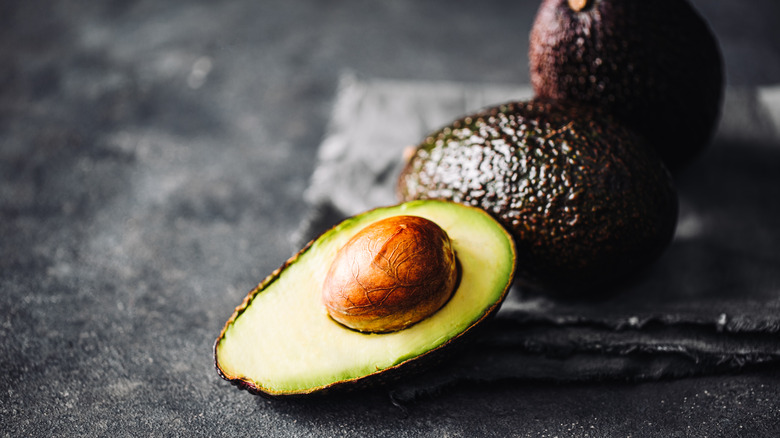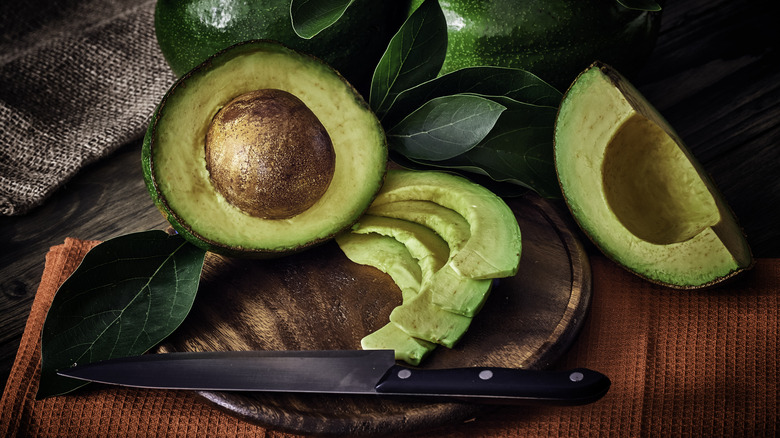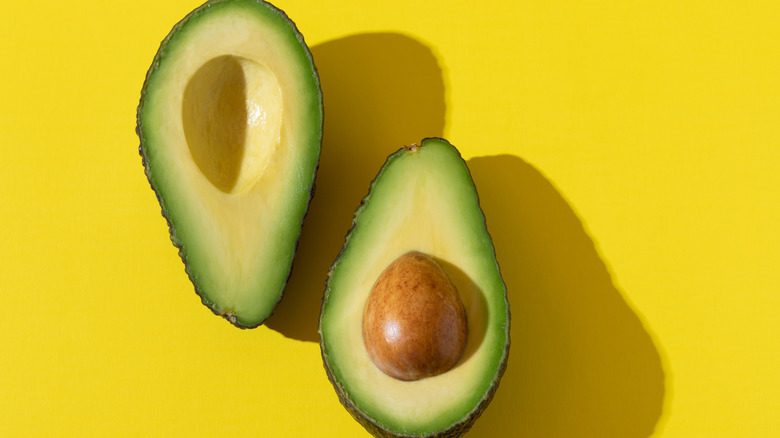How To Slow Down Avocado Ripening
We can love our avocado toast and bowls of guac while still admitting the glaringly obvious fact: Avocados are one of the most temperamental fruits to exist. Rock hard and unripe one minute but nauseatingly mushy and brown the next, avocados have their own mind as to when or how quickly they choose to ripen. Plus, avocados aren't always cheap, so it can be unnecessarily wasteful when they become overripe quicker than expected, and you have to toss them out.
While there is no way to prevent nature from doing its thing, there are ways to slow the process. If you'd like to keep your avocado from ripening ridiculously quickly, all you have to do is store it in the refrigerator. Avocados ripen because of the ethylene gas that they produce. When you want an avocado to ripen at a faster rate, all you have to do is trap the ethylene gas by storing the fruit in a closed paper bag.
Even better if it is stored with other ethylene-producing fruits — like bananas. So to do the exact opposite and slow the ripening process, all you have to do is draw out the rate at which an avocado produces ethylene — and the cold temperature of a refrigerator will do just that. Additionally, when you store the avocado in a refrigerator, make sure that there aren't any other ethylene-producing fruits (apple, banana, and the like) sitting next to it.
What to look for when the avocado finally ripens
While refrigeration will slow down the process, the avocado will still ripen at some point — and you need to know when that happens. There are several signs that you can look out for, either by observing what the avocado looks like or by feeling it under your fingers. Unripe avocados have a bright to dark green hue with only spots of black on them. When the skin darkens to an almost-black shade, you'll know that your avocado is ripe.
You can also peel back the cap of an avocado — the place where it was hanging from the stem — to check what color the fruit is beneath it. If it's yellow, the avocado is still ripening, but once it's closer to green, it's time to slice it open. You can always feel the texture of the avocado every few days as it sits in the refrigerator too. The skin of a ripe avocado should be rough and lumpy, and its flesh slightly pliable under the pressure of your fingers (without being overly soft and mushy). If it feels too smooth to the touch, pop it back in the fridge to get it to ripen at a slow pace.
Ways to keep an avocado fresh once it's already ripe
Once an avocado does ripen, there are ways to prolong its freshness still. As soon as an avocado is sliced, the exposure to air will cause it to oxidize and begin browning. To slow the browning by a day or two, you can either tightly wrap the flesh of the sliced avocado in some cling film, or brush it with citric acid — aka lemon juice. Oil works just too — it will act as a protective layer between the avocado and the air, slowing the speed with which it browns.
You could also store sliced avocado with slices of onion as the sulfur released from the latter is excellent at keeping the fruit from oxidizing too quickly. Whether or not you might want your avocados to taste like pungent onions, however, is an entirely different story. A certain trick doing the rounds of social media further suggests storing avocados in water in the fridge. While there may be anecdotal evidence that shows doing so will slow down aging, a spokesperson from the FDA told Today that doing so is a risky move. Bacteria — such as listeria and salmonella — already present on an avocado can grow exponentially when exposed to water — even after being thoroughly washed, making the fruit dangerous to consume. Alas, not every effective kitchen hack is a safe one, so it's best to avoid any avocado-infused water.



